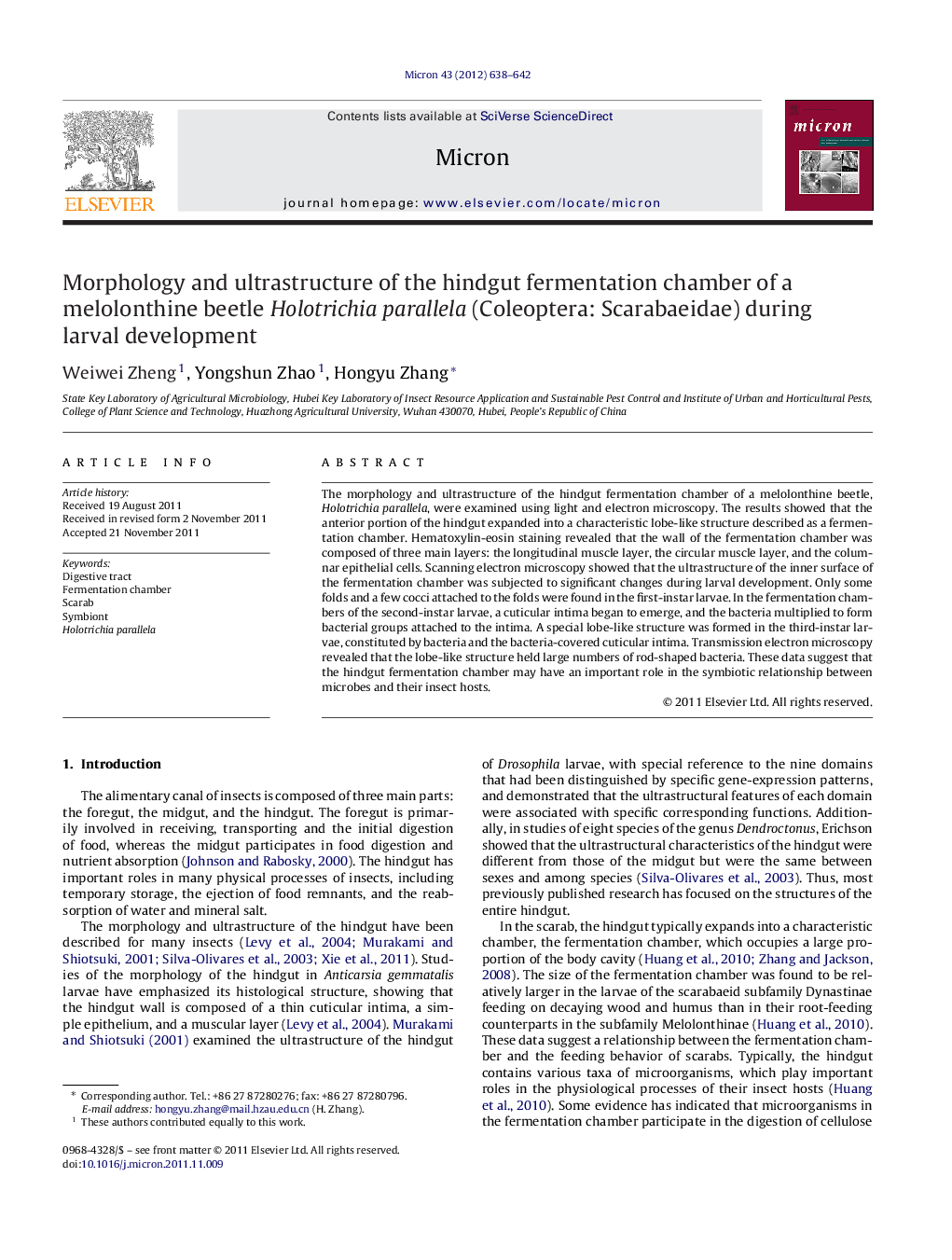| Article ID | Journal | Published Year | Pages | File Type |
|---|---|---|---|---|
| 1589300 | Micron | 2012 | 5 Pages |
The morphology and ultrastructure of the hindgut fermentation chamber of a melolonthine beetle, Holotrichia parallela, were examined using light and electron microscopy. The results showed that the anterior portion of the hindgut expanded into a characteristic lobe-like structure described as a fermentation chamber. Hematoxylin-eosin staining revealed that the wall of the fermentation chamber was composed of three main layers: the longitudinal muscle layer, the circular muscle layer, and the columnar epithelial cells. Scanning electron microscopy showed that the ultrastructure of the inner surface of the fermentation chamber was subjected to significant changes during larval development. Only some folds and a few cocci attached to the folds were found in the first-instar larvae. In the fermentation chambers of the second-instar larvae, a cuticular intima began to emerge, and the bacteria multiplied to form bacterial groups attached to the intima. A special lobe-like structure was formed in the third-instar larvae, constituted by bacteria and the bacteria-covered cuticular intima. Transmission electron microscopy revealed that the lobe-like structure held large numbers of rod-shaped bacteria. These data suggest that the hindgut fermentation chamber may have an important role in the symbiotic relationship between microbes and their insect hosts.
► General, histological, ultrastructural structure of fermentation chamber was studied. ► Ultrastructure of fermentation chamber changed obviously during larval development. ► The intima–microbes composite structure was formed in the third instar larvae.
